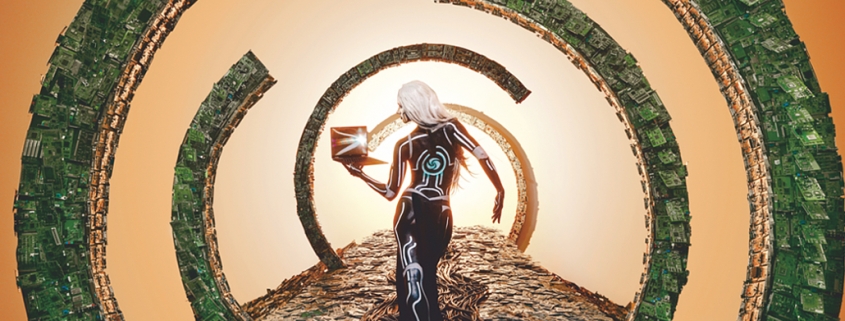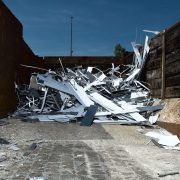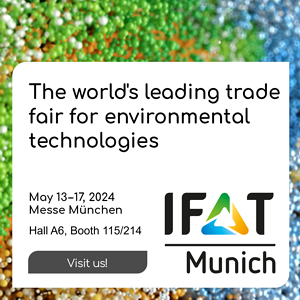New Statistics on Global E-Scrap Quantities: A Big Business
The Bureau of International Recycling (BIR) commissioned a new report, which was published at the world recycling organization’s latest convention, held in Barcelona in May this year.
End-of-Life electrical and electronic equipment (EoL-EEE) is currently considered to be one of the fastest growing waste streams worldwide, growing at three to five percent per year, especially in the member countries of OECD (Organization for Economic Co-operation and Development) where markets are saturated with huge quantities of electrical and electronic goods, the authors of the study informed. The report, entitled “Statistics on the national arisings of e-scrap and the movement of e-scrap between countries”, concludes the most recent data, although “good quality data are only available for a limited number of countries. Moreover, differences in the definitions, the range of e-scrap categories reported, the methodologies used and the year of data reference, severely restrict the possibility of meaningful comparisons and data aggregation in wider geographic regions.” In this context, the BIR E-Scrap Committee has decided to produce a definitive set of statistics on the national generation of e-scrap, both UEEE (used electrical and electronic equipment) and EoL-EEE, and their movement between countries, including reuse and recycling data, based on all relevant data from already published studies and other data sources, the authors emphasized.
The report – commissioned by BIR’s E-Scrap Committee – was conducted by a team of experts at the Harokopio University of Athens, led by Professor Katia Lasaridi. Their evaluation of real data and extrapolation of figures from around 180 countries indicate that global e-scrap generation is set for “a more than 30 percent increase in less than a decade”, the BIR informed in a press release.
The findings
In 2016, e-scrap generated worldwide amounted to 41.2 million metric tons. This amount included 25.4 million tons large household appliances (e.g. washing machines and freezers), 4.9 million tons small household appliances (e.g. microwaves and vacuum cleaners), 6.7 million tons information and communication technology (ICT) equipment (e.g. PCs and mobile phones) and 4.2 million tons consumer electronics (e.g. television sets, video cameras). According to the study, this corresponds to 5.6 kilograms per inhabitant. These figures vary by region: The spectrum ranged from 1.5 kilograms per inhabitant in Africa to 21.9 kilograms/inhabitant in the USA and Canada.
According to the study, the world will be generating an estimated amount of 53.9 million tons of e-scrap by the year 2025 – equivalent to an annual growth rate of over three percent. It is estimated that the fastest growth is likely to be seen in the Asia-Pacific region where the generation of e-scrap is expected to surge from 3.6 kilograms per inhabitant in 2016 to five kilograms nine years later.
Over the years from 2016 to 2025 – and when taking into account rising population – per capita generation of e-scrap is forecast to climb around 20 percent worldwide from 5.6 kilograms per year to 6.7 kilograms. In addition to the Asia-Pacific region, generation growth is predicted for all other regions of the world: from 1.5 to 1.8 kilograms in Africa, from 9.7 to 11.9 kilograms in Eastern Europe, from 6 to 6.8 kilograms in Latin America and the Caribbean, from 21.9 to 24.1 kilograms in the USA and Canada, and from 20.2 to 22.6 kilograms in Western Europe and others, BIR reported.
In pure volume terms, the Asia-Pacific region is already the world’s largest generator of e-scrap with a total of 15.9 million tons in 2016; this figure is expected to soar to 23.7 million tons by 2025. “This is more than double the estimate for the second-largest generating region, namely Western Europe and others, whose total is forecast to climb from a fraction under nine million tons in 2016 to more than 10.2 million tons nine years later,” the world recycling organization stated.
“The total quantities of e-scrap arisings are on an upward trend across the globe with a very strong indication that this trend will continue unabated for some time due to the emergence of innovative technologies and more affordable electronics,” BIR cited the report’s authors. “Taking into account the population size and current low generation per inhabitant in the Asia-Pacific countries, one can conclude that the future increase of e-scrap would mainly be derived from these nations and to a lesser extent from Africa.” The study would highlight the challenges and opportunities relating to e-scrap and provide a baseline for the recycling industry and policy-makers “to plan effective actions to capture the e-scrap potential for contributing to Circular Economy goals”. As reported by BIR, they also call for standardized methods and techniques to facilitate realistic measurement of the amounts of e-waste generated in different countries.
________________
E-Scrap and the Chinese Situation
Faced with China’s import ban on plastics scrap, processing operations have been moving to South East Asian countries such as Thailand, Malaysia and Vietnam. However, these nations are also sharpening their focus on environmental controls, Dr. Steve Wong of Fukutomi Co. Ltd and the China Scrap Plastics Association told the BIR E-Scrap Committee meeting in Barcelona.
The Committee’s Chairman Dr. Thomas Papageorgiou of Anamet SA in Greece agreed that China’s change of approach to mixed plastics and mixed metals had “affected the business significantly”, creating “a challenge and an opportunity” for the industry in Europe where many investments in new capacity and output improvements were being seen. He described himself as “very optimistic” about prospects for Europe.
According to Surendra Patawari Borad of Gemini Corporation, recent key developments in India had included a potentially “game-changing” shift in rules governing the importation of second-hand goods for repair, re-engineering and refurbishment and an amendment of the country’s e-waste rules to establish a collection target for producers of ten percent for e-waste generated, rising by ten percentage points every year to 2023. With India projected to generate around three million tons of e-waste in 2018, he suggested e-scrap processing would become “a big business” in the country.
________________
Information about the Artist and the Subject
With his “hyper-real sculptures” made out of old electronics Benjamin Von Wong wanted to raise awareness about the growing e-waste problem – and cooperated with American computer technology company Dell, which runs a recycling program regarding e-waste in more than 80 countries. Von Wong was given 4,100 pounds (1.8597 tons) of e-waste to build the sculptures, the approximate amount of electronic waste generated by an American in a lifetime. The sculptures – built with simple tools, paint and wood – were created at a facility of Dell’s recycling partner in Dallas by 50 volunteers over a stretch of ten days and were only kept up for a single day before being returned for recycling. The photos were published in March this year. https://blog.vonwong.com/dell/
________________
GR 2/2018










